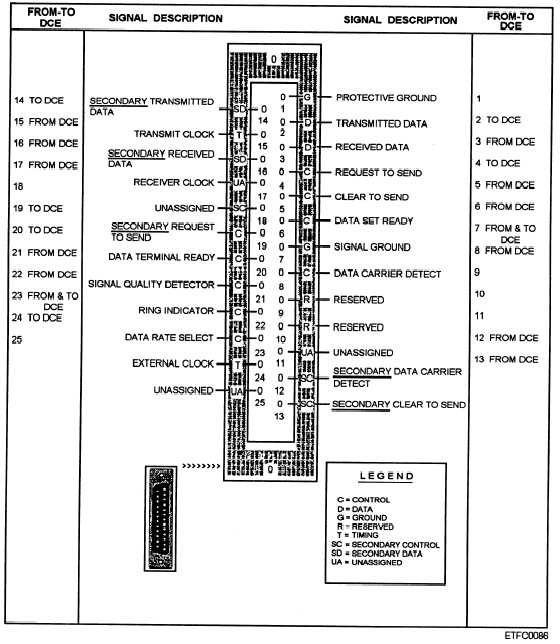transmitted over the I/O channel control lines and used
to synchronism the message transfer, or the message
itself may be preceded and succeeded by a string of
special synchronization (sync) characters. The sync
characters allow the receiving device to frame and
receive the message data. Messages preceded by sync
pulses are followed by one or more special
synchronization (sync) characters to indicate the end of
a particular bit stream. Often several different types of
messages are sent over the same channel. The message
contents identify the type of message and the
destination (addressed peripheral).
DCE/DTE Serial I/O Cable Signals
With serial operations, one cable will suffice to
perform serial I/O operations with an external device.
Each of the signal leads is assigned a specific function.
These functions can be assigned one of four specific
groupings: data (both primary and secondary), control
(again, both primary and secondary), timing, and
ground. Each of these groupings is indicated by a letter
in figure 7-25 and is further described in the legend. We
use an RS-232 as our example in this discussion.
Although the connector itself is not specified in the
standard, a 25-pin connector (such as the one shown in
figure 7-25) has become the generally accepted
Figure 7-25.—A typical RS-232 female connector.
7-29

